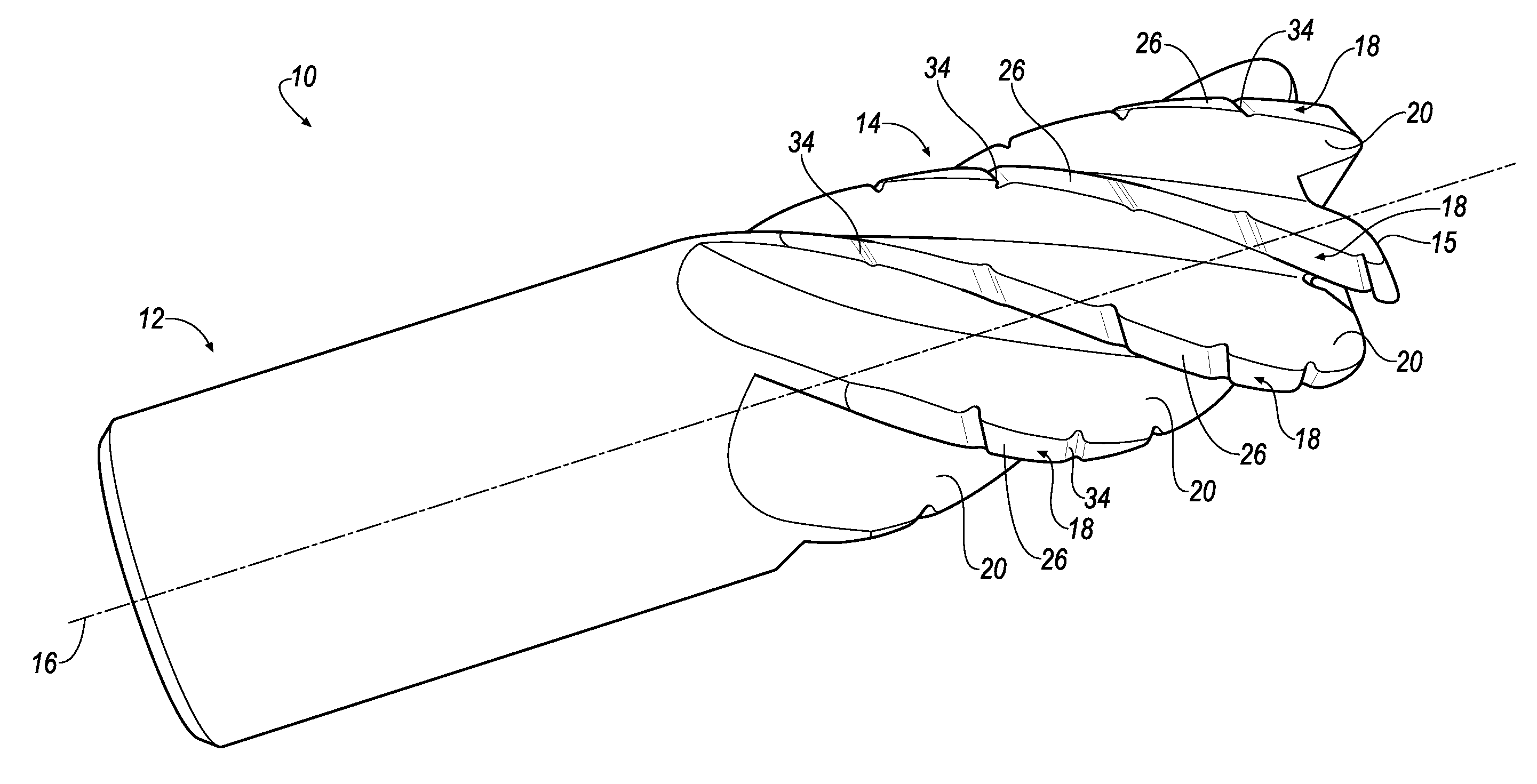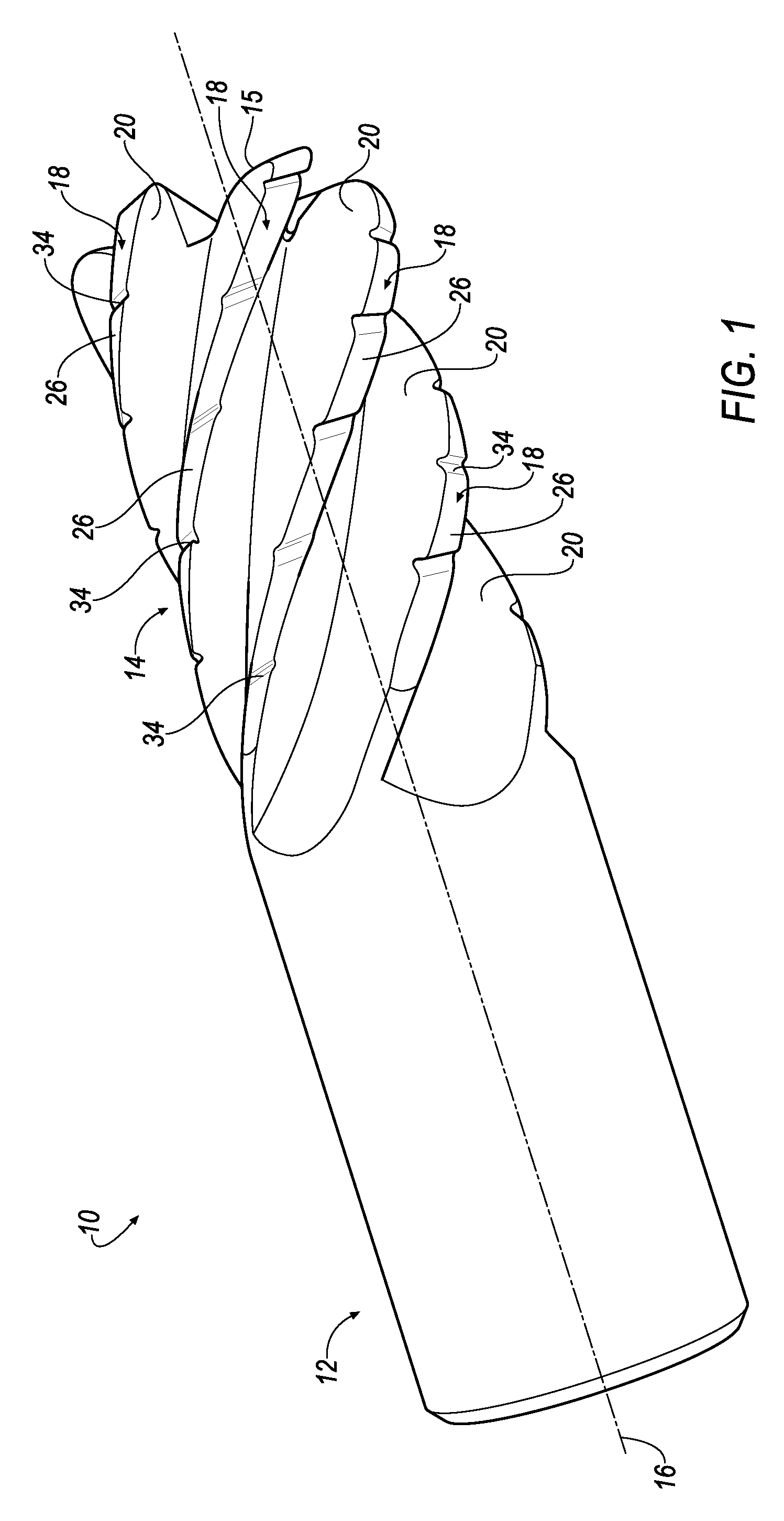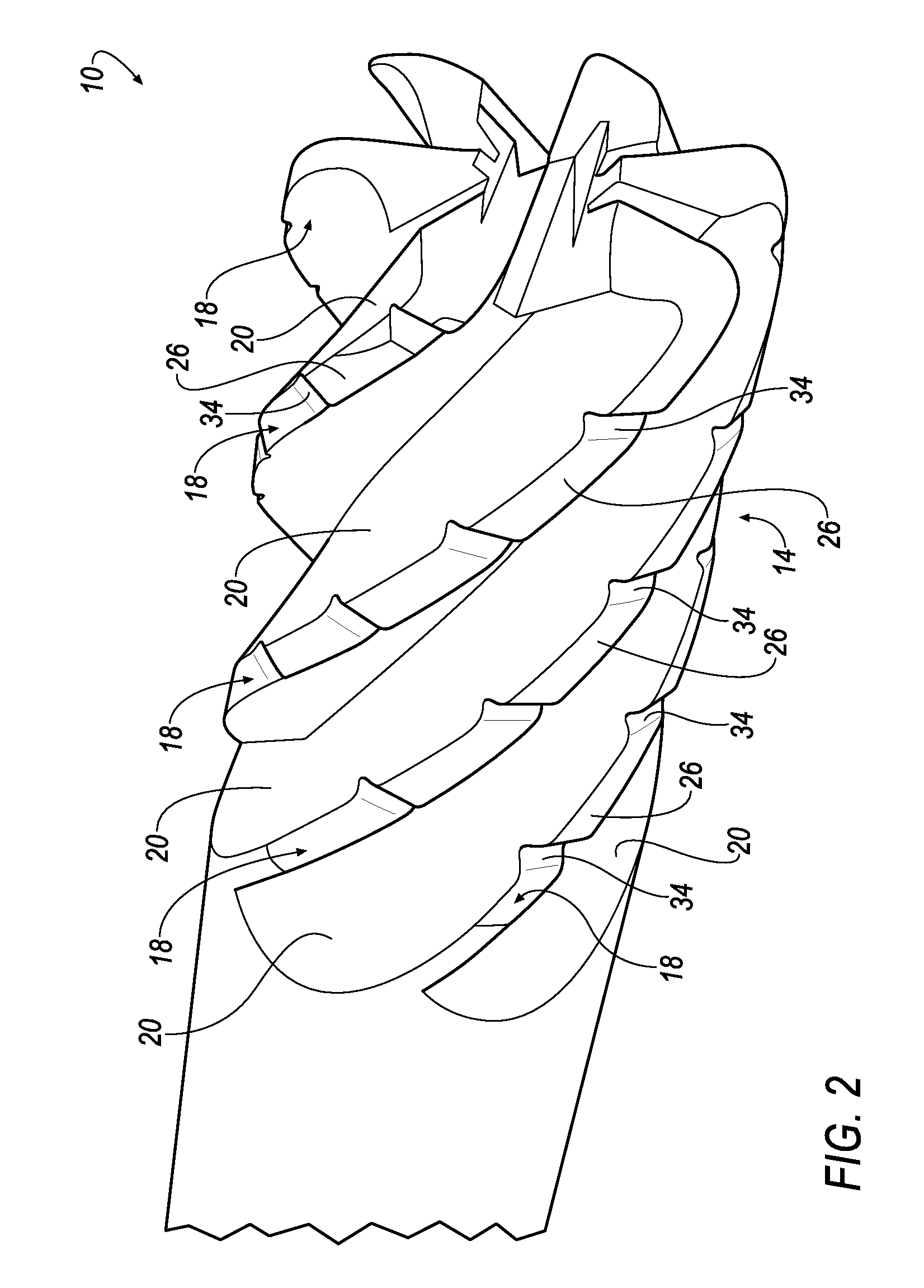Rotary cutting tool with chip breaker pattern
a cutting tool and chip breaker technology, applied in the field of rotary cutting tools, can solve the problems of excessive wear, poor cutting action, and use of any of the conventional rotary cutting tools described
- Summary
- Abstract
- Description
- Claims
- Application Information
AI Technical Summary
Benefits of technology
Problems solved by technology
Method used
Image
Examples
Embodiment Construction
[0017]Referring now to FIGS. 1 and 2, a rotary cutting tool 10 is provided that includes a shank portion 12, a cutting portion 14 having a cutting tip 15, and a longitudinal axis 16. The overall shape of the cutting portion 14 may be, but is not limited to, a cylindrical shape or a frustoconical shape. The cutting portion 14 includes a plurality of blades 18 separated by flutes 20 extending the length of the cutting portion 14. In the illustrated embodiment, the rotary cutting tool 10 has a total of six (6) blades 18 and flutes 20. However, it will be appreciated that the invention is not limited by the number of blades and flutes, and that the invention can be practiced with a fewer or a greater number of blades and flutes. For example, the invention can be practiced with four (4) blades and flutes, eight (8) blades and flutes, and the like.
[0018]Referring now to FIGS. 3 and 4, each of the blades 18 has a leading face 22, a trailing face 24, and a land surface 26 bridging the leadi...
PUM
| Property | Measurement | Unit |
|---|---|---|
| Angle | aaaaa | aaaaa |
| Angle | aaaaa | aaaaa |
| Radius | aaaaa | aaaaa |
Abstract
Description
Claims
Application Information
 Login to View More
Login to View More - R&D
- Intellectual Property
- Life Sciences
- Materials
- Tech Scout
- Unparalleled Data Quality
- Higher Quality Content
- 60% Fewer Hallucinations
Browse by: Latest US Patents, China's latest patents, Technical Efficacy Thesaurus, Application Domain, Technology Topic, Popular Technical Reports.
© 2025 PatSnap. All rights reserved.Legal|Privacy policy|Modern Slavery Act Transparency Statement|Sitemap|About US| Contact US: help@patsnap.com



